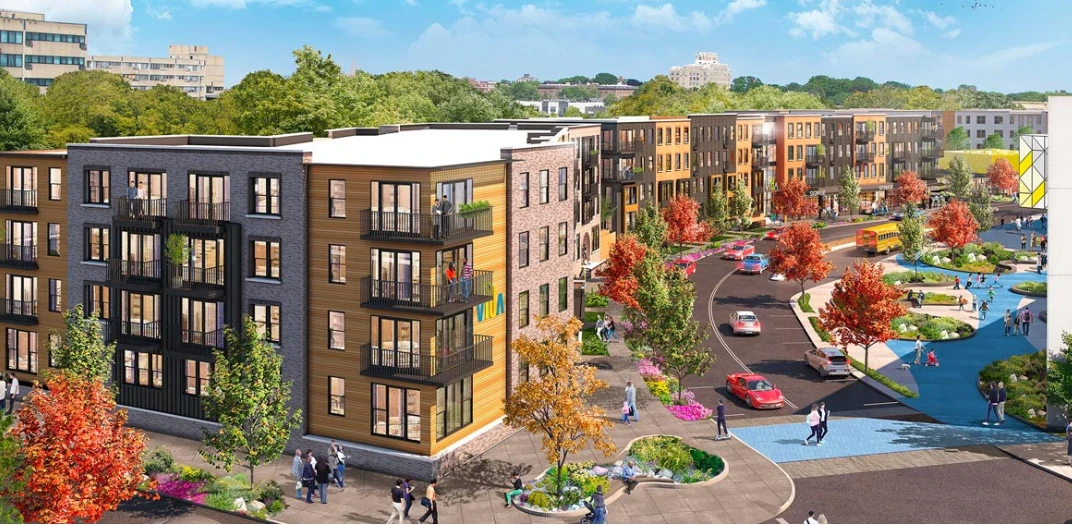
How Mixed-Use Developments Are Shaping Urban Landscapes

In today's urban landscapes, mixed-use developments stand at the forefront of city planning and architectural innovation. These spaces blend residential, commercial, and recreational areas into vibrant ecosystems that reshape our urban experience. By merging different facets of daily life, they not only revolutionize cityscapes but also offer a sustainable model for modern living. This exploration will highlight their transformative impact on urban areas, illustrating how they represent a shift towards more inclusive, dynamic, and sustainable environments.
At the heart of this urban evolution lies Advance India Projects Limited (AIPL Joy Central) , poised to become a beacon of revitalization and vibrancy. Envisioned as a bustling hub, AIPL Joy Central will feature an array of retail outlets, eateries, cafés, and a cinema, all centered around a grand piazza that promises activity at all hours. This development is set to become a lively cornerstone of the community, where architecture and commerce blend seamlessly, ensuring that AIPL Joy Central remains a dynamic focal point in the urban fabric.
Table of Contents
1. The Future of Workplace
Design
2. The Impact of Artificial Intelligence
3. Conclusion
4. Disclaimer
Understanding Mixed-Use Developments
Mixed-use developments are characterized by their multipurpose design, incorporating various functions within a single project or closely connected set of structures. These developments typically combine two or more uses, such as residential apartments above retail stores, offices next to entertainment venues, or public spaces surrounded by a mix of uses. The key to their success lies in their integrated approach, which aims to create synergies between different uses and generate a lively, 24/7 environment.
The Rise of Mixed-Use Developments
The concept of mixed-use developments is rooted in the traditional organization of old towns and cities where living spaces, marketplaces, and workshops coexisted in close proximity. This approach to urban design facilitates a vibrant street life, reduces the need for transportation, and increases the efficiency of land use. In the contemporary context, mixed-use developments have gained prominence due to their potential to address several urban challenges, including urban sprawl, the segregation of land uses, and the inefficiencies associated with single-use zoning policies.
Benefits of Mixed-Use Developments
Mixed-use developments offer a plethora of benefits that enrich the urban experience and contribute to the sustainable growth of communities:
1. Enhanced Quality of Life
By integrating residential, commercial, and recreational amenities, mixed-use developments create dynamic, walkable neighborhoods that promote convenience and accessibility. Residents enjoy the convenience of having essential services, retail outlets, and entertainment options within walking distance, nurturing a community spirit and reducing the need for extensive commutes.
2. Economic Prosperity
Mixed-use developments stimulate local economies by attracting businesses, increasing property values, and generating employment opportunities in diverse sectors. The co-location of residential and commercial spaces fosters a symbiotic relationship wherein the presence of consumers from nearby residences fuels the success of businesses, resulting in a vibrant and economically resilient community.
3. Optimized Land Use
By maximizing the efficiency of land utilization, mixed-use developments help alleviate urban sprawl and preserve green spaces, fostering environmental conservation and ecological balance. By concentrating development in compact, mixed-use nodes, cities can preserve valuable agricultural land, protect natural habitats, and reduce the ecological footprint associated with urban expansion.
4. Promotion of Active Transportation
By prioritizing pedestrian-friendly design and transit-oriented development, mixed-use developments encourage alternative modes of transportation, reduce dependence on automobiles, and alleviate traffic congestion. Access to well-connected public transit options, pedestrian walkways, and cycling infrastructure promotes healthy, active lifestyles while lowering emissions of greenhouse gas and enhancing air quality.
5. Cultural Diversity and Social Interaction
Mixed-use developments serve as vibrant hubs of cultural exchange, fostering social cohesion, and nurturing inclusive communities where residents, workers, and visitors can interact and thrive. The diverse mix of people, businesses, and activities creates opportunities for cross-cultural dialogue, collaboration, and the celebration of shared experiences, enriching the social fabric of urban life.
6. Resilience to Economic Fluctuations
The diverse revenue streams and synergistic relationships between different land uses inherent in mixed-use developments enhance their resilience to economic downturns and market fluctuations. Unlike single-use developments that may be vulnerable to shifts in market demand, mixed-use developments benefit from a diversified revenue model, with revenue streams from residential, commercial, and recreational tenants helping to mitigate financial risks.
7. Improved Public Health
By promoting physical activity, access to healthy food options, and proximity to medical facilities, mixed-use developments contribute to improved public health outcomes and overall well-being. Walkable neighborhoods with access to parks, recreational facilities, and healthcare services encourage active lifestyles, reduce stress, and foster a sense of community well-being.
8. Sustainable Urbanism
Through the incorporation of green infrastructure, energy-efficient technologies, and sustainable design practices, mixed-use developments exemplify the principles of environmental stewardship and climate resilience, paving the way for a greener, more sustainable urban future. Green roofs, rainwater harvesting systems, and energy-efficient building designs reduce resource consumption, mitigate urban heat island effects, and enhance the resilience of urban ecosystems to climate change impacts.
Challenges and Opportunities
Although the advantages of mixed-use developments are evident, executing them faces obstacles. Challenges include navigating regulatory barriers due to zoning laws that often prefer single-use projects, confronting financial and investment uncertainties tied to their complex nature, and the necessity for meticulous planning and design. This careful approach is essential to guarantee harmony among diverse uses and to address potential issues like noise or traffic congestion.
Conclusion
As cities continue to evolve, mixed-use developments stand out as a key element in the future of urban planning. Mixed-use developments like AIPL Joy Central in Sector 65, Gurugram represent a forward-thinking approach in urban design, blending residential, commercial, and leisure spaces to enhance urban livability and sustainability. These developments are pivotal in addressing urban challenges by promoting economic diversity, community interaction, and efficient land use. AIPL Joy Central, offering retail, dining, and entertainment options around a vibrant piazza, exemplifies this model's potential to foster a dynamic community hub, standing as a noteworthy option among many for catalyzing urban transformation.
Disclaimer
This content is provided for informational purposes only and is not intended as an advertisement, financial advice, or real estate advice. The views expressed herein are the author's own and do not necessarily reflect the views of AIPL. While every effort has been made to ensure the accuracy and completeness of this information, circumstances can change, and the information may become outdated. We recommend consulting with a professional advisor before making any real estate decisions. References to specific properties, investments, or locations are for illustrative purposes only and should not be considered an endorsement or recommendation. AIPL Group and its directors, subsidiaries, officers, employees, agents, affiliates, and partners, are not liable for any consequence of any action taken by the viewer relying on such material/ information on this blogpost.





